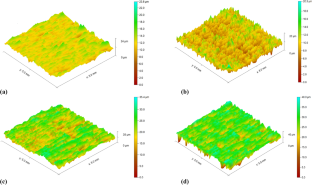Journal of Materials Engineering and Performance ( IF 2.3 ) Pub Date : 2024-04-08 , DOI: 10.1007/s11665-024-09419-1 F. Aghili , K. Raeissi , B. Hoomehr , M. Kharaziha , S. Salehi

|
In the present study, the corrosion barrier performance and biological properties of AZ31 magnesium substrate, previously treated by plasma electrolytic oxidation technique, were simultaneously improved by zinc oxide-bioactive glass (ZnO-BG) coating applied using the electrophoretic deposition technique. For this purpose, core–shell ZnO-BG nanoparticles were synthesized using a sonochemical/sol–gel procedure. According to our results, applying the ZnO-BG coating increased the total faradic resistance about 6 times compared to the oxidized substrate, while that was around 3 times by the ZnO coating. At long-term immersion, the CZnO coating revealed a higher barrier performance than ZnO coating, but both were less than the oxidized substrate. The water contact angle decreased remarkably by applying ZnO and ZnO-BG coatings on the oxide interlayer, which increased the wettability of the surface. The bone-like apatite formation was significantly higher for the ZnO-BG-coated specimen due to the release of Ca2+ ions from the bioactive glass nanoparticles. For the ZnO-BG-coated specimen, the ICP-OES analysis results displayed the lower Mg2+ concentration in the simulated body solution after 28 days, which confirmed the lower degradation of this specimen compared to the ZnO one. According to CellTiter-Blue® Cell test results, the MC3T3 cell viability was significantly improved on the ZnO-BG-coated specimen compared to other specimens.
中文翻译:

经处理的 AZ31 镁合金上电泳获得的氧化锌/生物活性玻璃复合涂层的生物和腐蚀屏障特性:进一步的体外研究
在本研究中,采用电泳沉积技术涂覆氧化锌-生物活性玻璃(ZnO-BG)涂层,同时改善了先前通过等离子体电解氧化技术处理的AZ31镁基体的腐蚀阻隔性能和生物性能。为此,使用声化学/溶胶凝胶程序合成了核壳 ZnO-BG 纳米颗粒。根据我们的结果,与氧化基材相比,应用 ZnO-BG 涂层使总法拉第电阻增加了约 6 倍,而 ZnO 涂层则增加了约 3 倍。在长期浸泡时,CZnO涂层表现出比ZnO涂层更高的阻隔性能,但均低于氧化基材。通过在氧化物中间层上涂覆ZnO和ZnO-BG涂层,水接触角显着降低,从而增加了表面的润湿性。由于生物活性玻璃纳米粒子释放出Ca 2+离子,ZnO-BG 涂层样品的骨状磷灰石形成明显更高。对于ZnO-BG涂覆的样品,ICP-OES分析结果显示28天后模拟身体溶液中的Mg 2+浓度较低,这证实了与ZnO样品相比,该样品的降解程度较低。根据 CellTiter-Blue® 细胞测试结果,与其他样本相比,ZnO-BG 涂层样本上的 MC3T3 细胞活力显着提高。



























 京公网安备 11010802027423号
京公网安备 11010802027423号